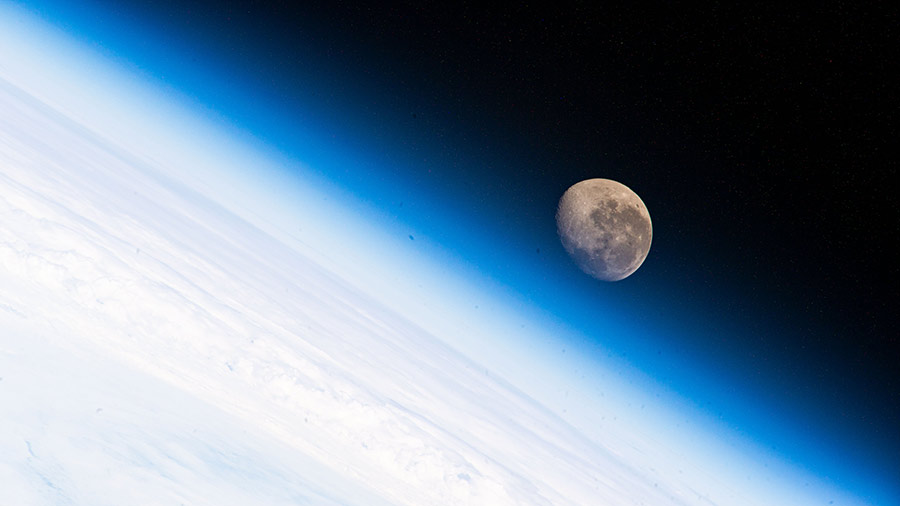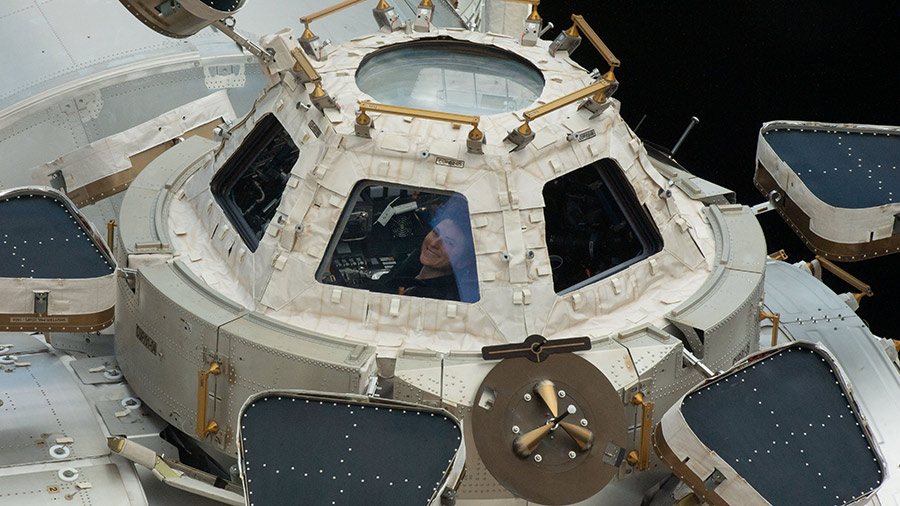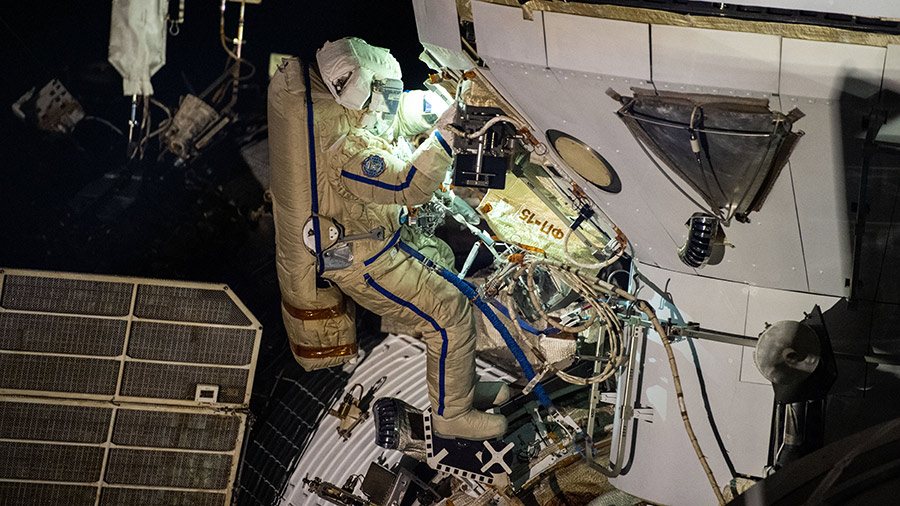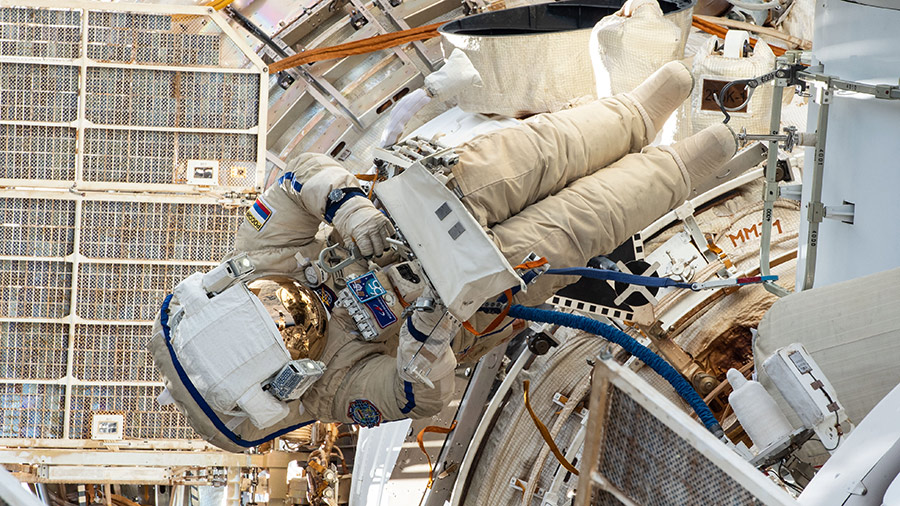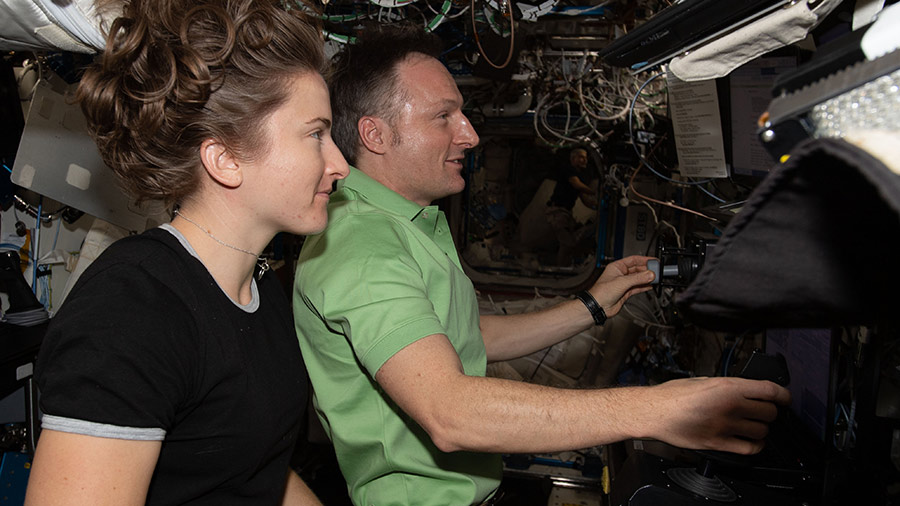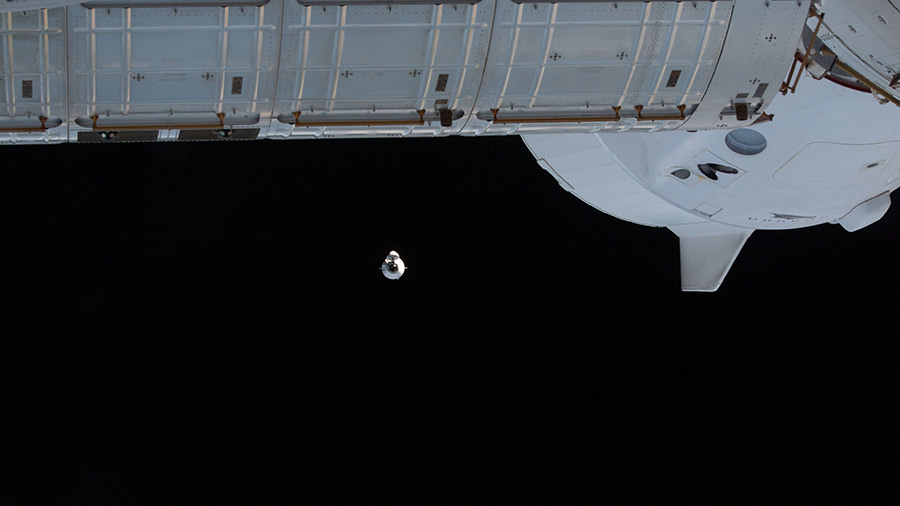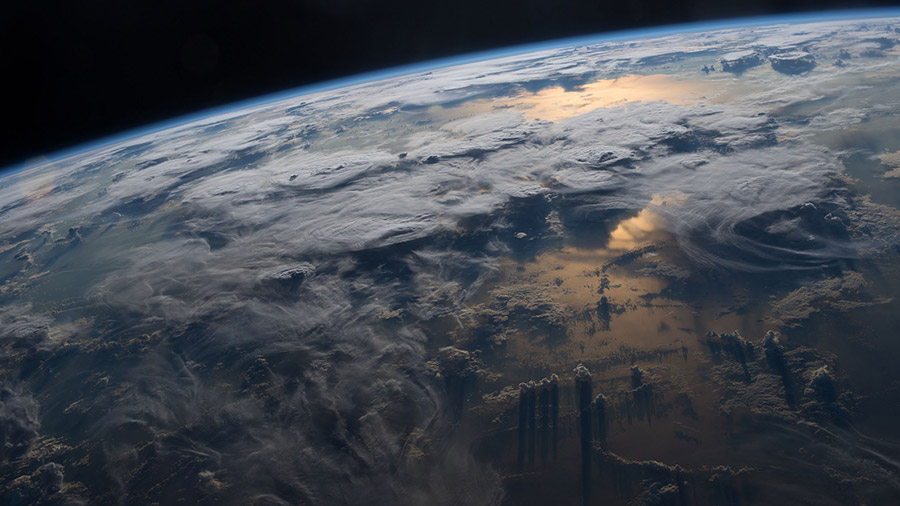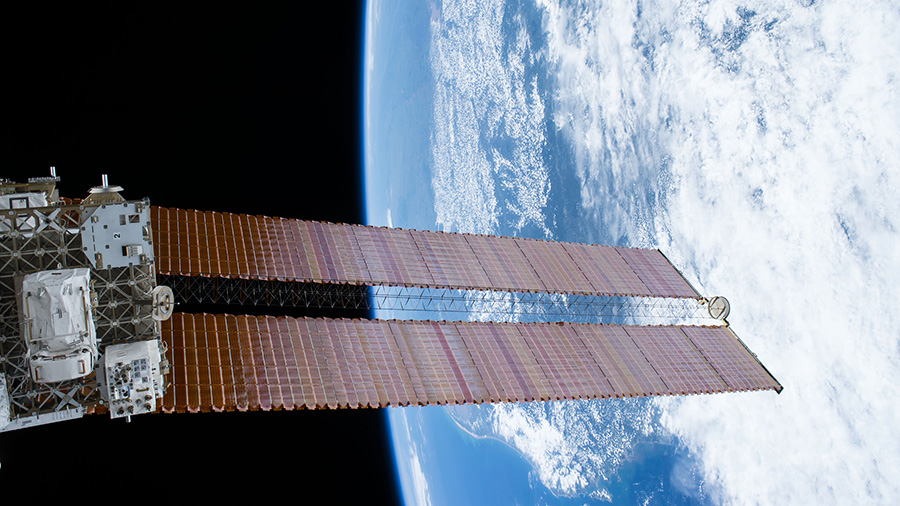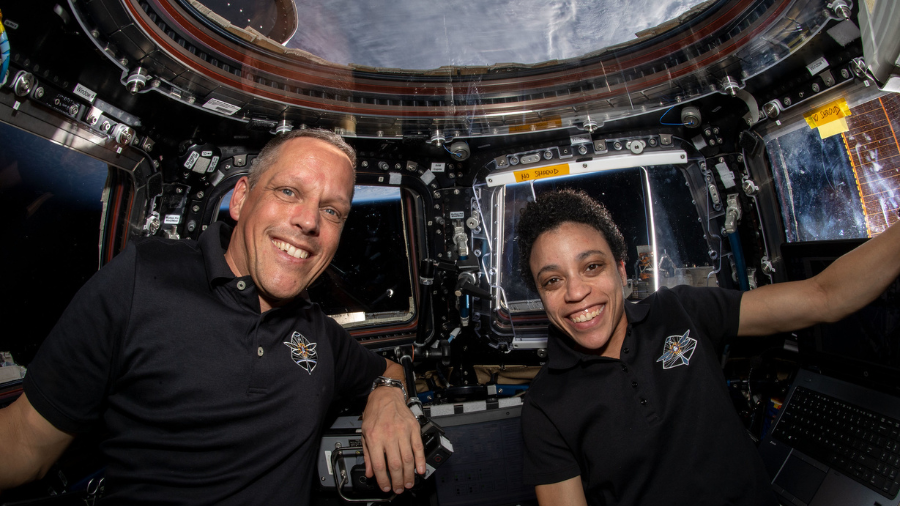
The Expedition 67 crew members kickstarted their week aboard the International Space Station by configuring a plant habitat, transferring cargo, and completing vision tests.
NASA Flight Engineers Jessica Watkins and Bob Hines made adjustments to the plant growth chamber. The system monitors vegetables grown in space that could help sustain astronauts on future missions.
Meanwhile, NASA Flight Engineer Kjell Lindgren was tasked with retrieving a couple of cargo items and taking photos with them for a conference and outreach events. Lindgren and Hines also had a chance to move cargo from the SpaceX CRS-25 Dragon spacecraft.
ESA (European Space Agency) Flight Engineer Samantha Cristoforetti spent the early day retrieving air samples for analysis with the ANITA-2 (Analyzing Interferometer for Ambient Air-2) device. Cristoforetti and Lindgren also worked on setting up the Rodent Research-22 experiment. She and the other NASA astronauts completed a remotely guided eye exam toward the end of their day as well.
Commander Oleg Artemyev of Roscosmos fit in an exercise session using the tranquility module’s advanced resistive exercise device (ARED) before carrying out maintenance work. Cosmonaut Sergey Korsakov squeezed in exercise on the VELO ergometer bike in between performing maintenance work on a laptop. Cosmonaut Denis Matveev spent an hour on the Cycle Ergometer with Vibration Isolation and Stabilization (CEVIS) device and finished the day taking measurements of Freon in the atmosphere using the Freon Leak Analyzer/Detector (FIT).
Learn more about station activities by following the space station blog, @space_station and @ISS_Research on Twitter, as well as the ISS Facebook and ISS Instagram accounts.
Get weekly video highlights at: http://jscfeatures.jsc.nasa.gov/videoupdate/
Get the latest from NASA delivered every week. Subscribe here: www.nasa.gov/subscribe

